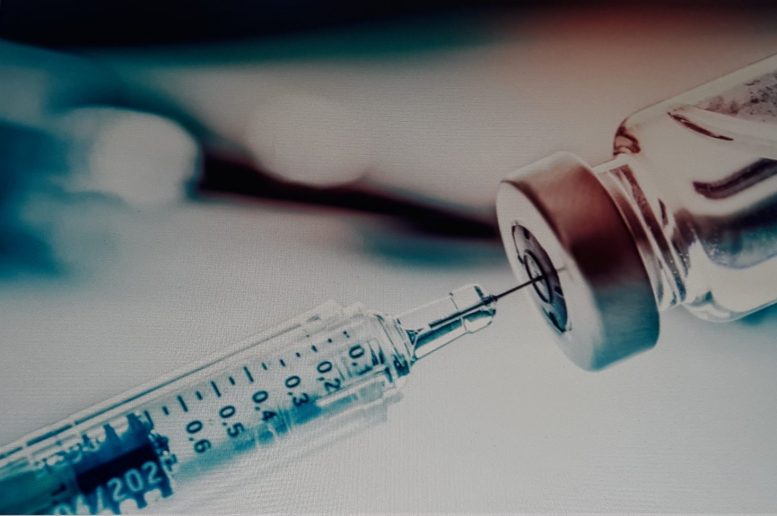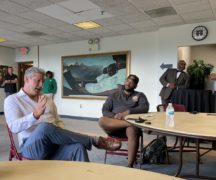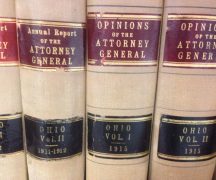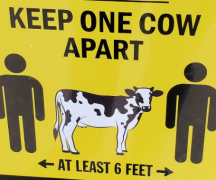In Woodland Hills, an east Cleveland neighborhood, about 15% of the population has been vaccinated against COVID-19, compared to about 41% statewide.
More than 81% of workers in the neighborhood work part-time, seasonal or low wage (below $35,0000 annually) jobs.
After comparing vaccine uptake data in Cuyahoga County with the percentage of the population in low-wage, seasonal or part-time jobs, Kate Warren, a research fellow at Cleveland-based think tank Center for Community Solutions, said a strong correlation exists between the employment structure and vaccination coverage.
“People who are low wage and hourly workers are hesitant to get the vaccine because of their inability to miss work,” she said.
“That’s a piece of the puzzle for them. The community needs to respond to that in order to make sure people have access to the vaccine and we can continue to get things under control with the coronavirus.”
The rate of Ohioans starting the COVID-19 vaccination process has plunged since early-April. About 41% of state residents have received at least one dose, according to data from the Ohio Department of Health. Now, health officials are stepping away from things like mass-vaccination sites and trying to figure out how to get more doses out to the unvaccinated population, possibly in a decentralized fashion.
Warren paired county-level vaccination data with American Community Survey data from the U.S. Census Bureau for her analysis, slated for public release this month.
She said the data points to a need for solutions for people who are worried about vaccine side effects that could force them to take time off they can’t afford, or that their employer doesn’t offer.
“It’s a hesitancy issue but it’s also an access issue. If you can’t miss a day of work, that’s a reason you cannot access a vaccine,” she said.
An estimated 635,000 Ohioans will “probably not” and another 1.1 million will “definitely not” take the COVID-19 vaccine, according to findings released Wednesday from the U.S. Census Bureau’s Household Pulse Survey.
Most respondents listed possible side effects as their reason for not receiving a vaccine.
Backing up her data, Warren cited a project from Cleveland Documenters, a civic journalism project, that interviewed 40 friends, family members, neighbors and residents from Cleveland to gauge their attitudes on pandemic issues. Many of them mentioned work-related pressures steering them away from vaccination.
“I think I will get sick,” said Anita Smith, 51, a teacher. “And I cannot afford to get sick, especially on purpose.”
Warren said employers and providers should understand these forces disincentivizing vaccination among employees and change the dynamic.
One solution: The American Rescue Plan, passed by Congressional Democrats this year and signed by President Joe Biden, offers a tax credit for small and medium sized businesses to fully offset the cost of paid leave for employees to get vaccinated.
“Vaccine hesitancy is complicated. It has to do a lot with values and ideas, and also convenience,” Warren said. “There are so many factors that go into someone deciding, yes, I’m going to get the vaccine, or no, I’m not. I do think there’s something compelling here about low wage and hourly work, and vaccination rates.”
***
Also from Ohio Capital Journal:
Commentary: The vaccination conversation changes
The vaccine conversation is changing, and it’s changing fast.
Just a month ago, people across the state were tapping “refresh” on their browsers, hoping to book their spot at a local pharmacy for an assurance against infection delivered by Moderna, Pfizer or Johnson & Johnson. Just two weeks ago, I biked down to Grove City from my home in the Brewery District to get the closest shot I could find.
Now, supply is outstripping demand. Pharmacies in many rural areas are practically begging people to get vaccinated. The overriding public policy problem of vaccination shifted quickly from one of rationing to one of public education.
Over a year ago now, I wrote about what Ohio can do to fight COVID-19, and the first strategy I listed was vaccination, understanding it would be awhile before we could implement such a strategy. That’s as true now as it was then: An ounce of prevention is worth a pound of cure, and two pin pricks is well worth reducing someone’s chance of contracting, suffering from, and passing on this deadly virus. READ MORE





